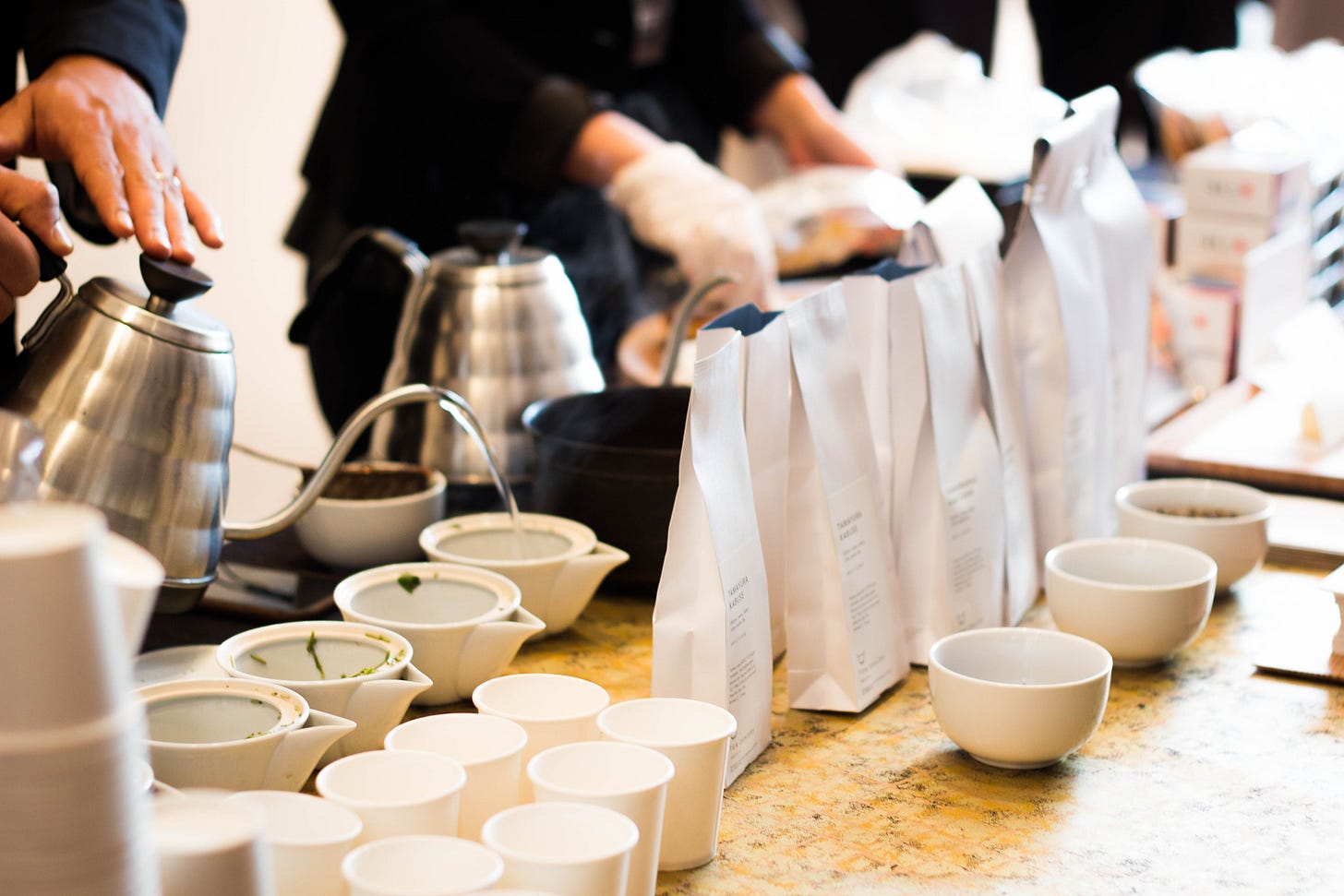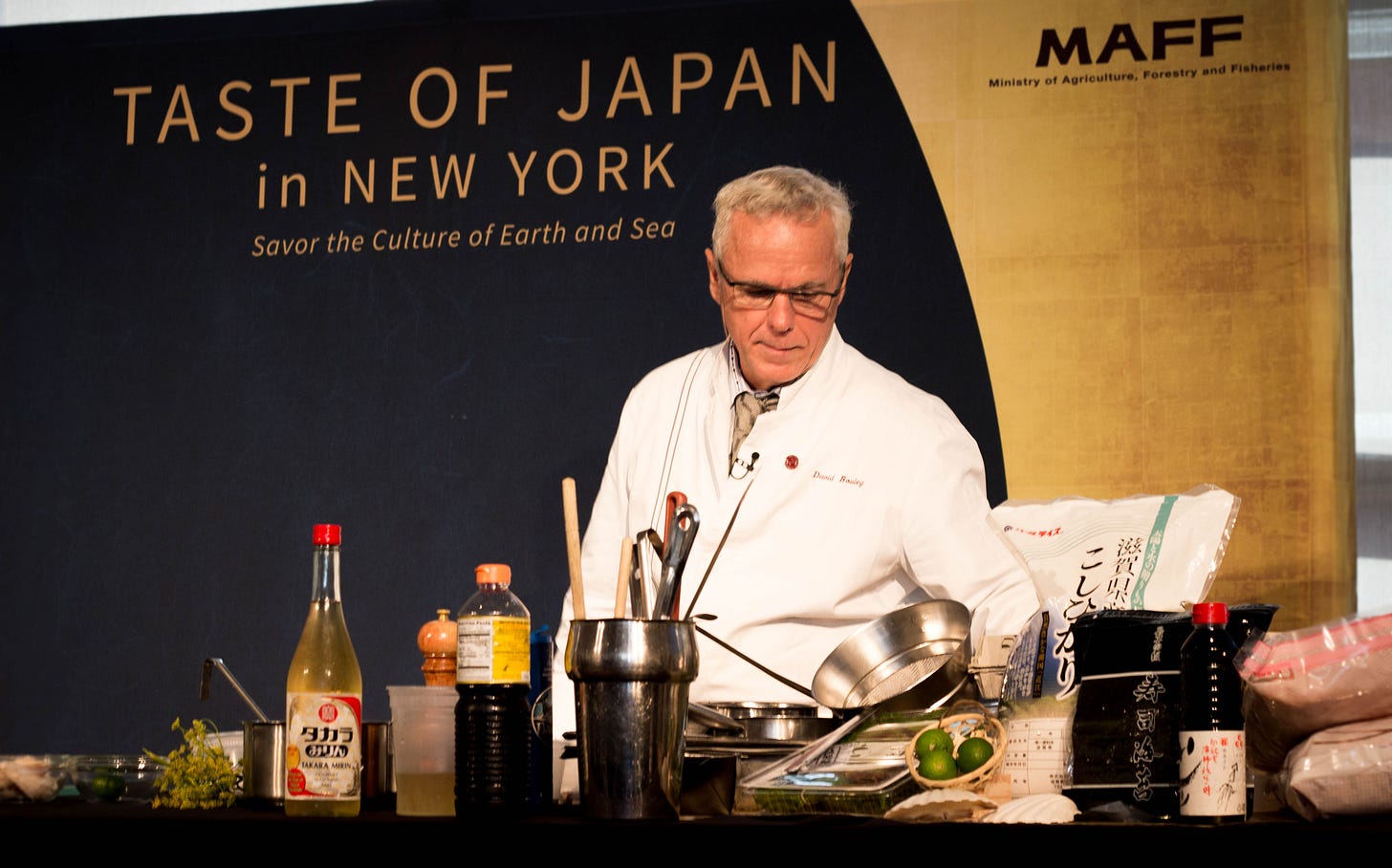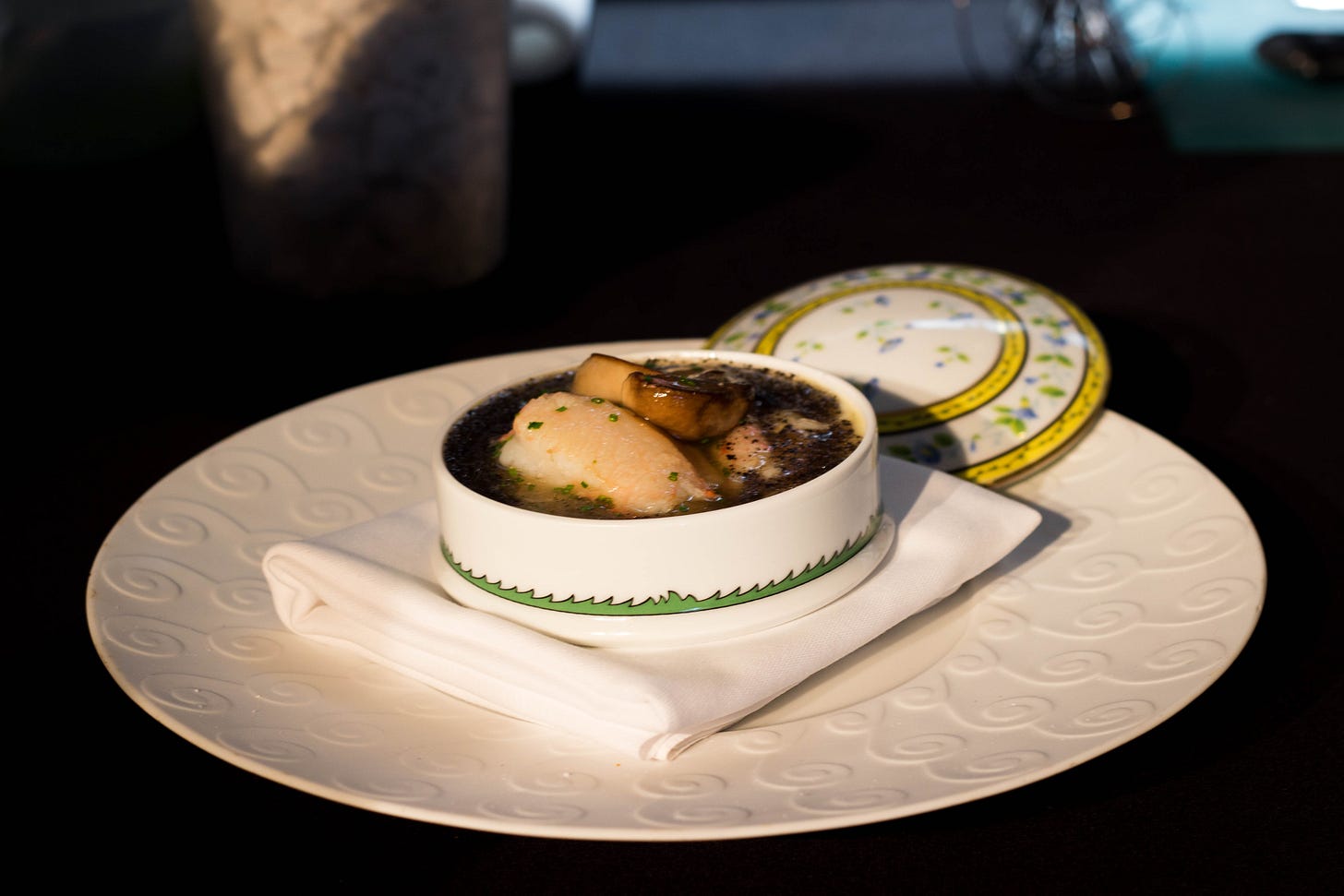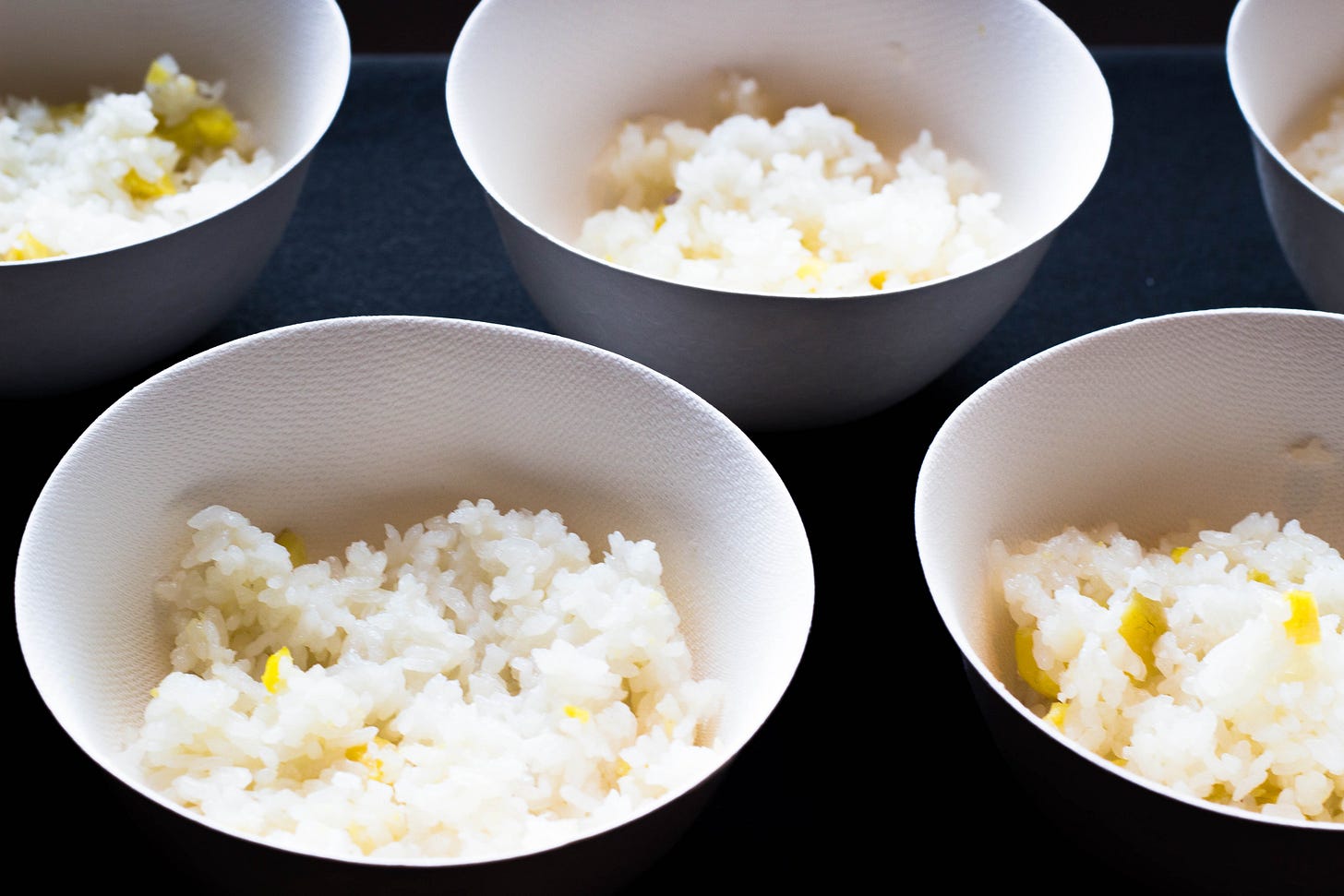This is an archived post from Roxanne’s previous blog on Wordpress. She is no longer a student member of AAJA. This is part of an ongoing effort to re-release old works as an incentive for paid subscribers and a thank you for your continued support.
Thanks to my student membership with AAJA, I was able to attend an exclusive press conference on Japanese cuisine featuring Ryoji Hamamoto and Chef David Bouley.
Here’s what my day looked like.
Ryoji Hamamoto
Green tea cupping
Bouley made a black truffle crab soup with kuzu as a base ingredient, and it was spectacular. There were also a bunch of free samples of popular Japanese pastries, teas, and (of course) an open Shochu bar.
I’m very thankful to have had the opportunity to attend this event and expand my culinary palate, while also witnessing the different types of media-heads that cover events like this.
There was definitely a cultural divide in some aspects, such as the fact I am Filipino and was probably the only one who didn’t speak Japanese, or the non-POC reporters asking if Japanese food will ever be part of the “gluten-free, vegan movement.” I was actually upset at some point of the reporters who would take samples of the desserts, break them open, then throw them away without even a bite. There is a Japanese expression one of the tea vendors taught me in response to this wasting phenomenon: Mottainai, “Don’t waste,” or “Every little thing has a soul.”
Black truffle crab broth
Cashew rice
Views from on top of Carnegie Hall
Overall, it was a learning experience and made me realize a lot more about how food is one of the most vital mediums in storytelling. Ryoji Hamamoto’s presentation on the history of Japanese cuisine showed that every detail counts in building a bigger picture. Food is sustenance, but it is also a means to wellbeing — this is why colors of plates represent seasons and evoke emotions, and certain ingredients direct the taste toward a different meaning. Not only is Japanese food about clean presentation and taste, it is about sustainability.
There’s still so much untapped potential in true Japanese cuisine that the Western world has yet to discover beyond teriyaki or sushi. Whether or not we are ready for it depends entirely on how much we truly value what we eat.










